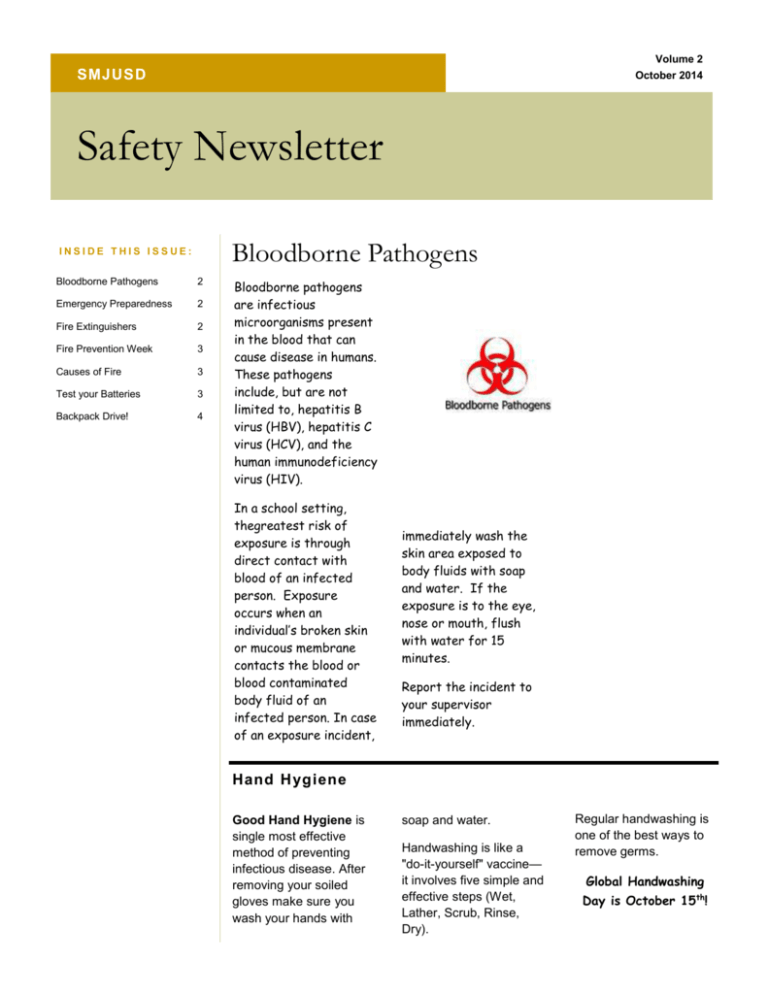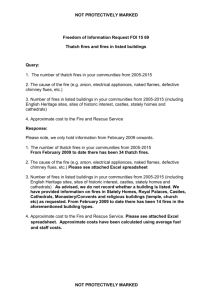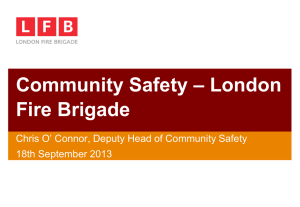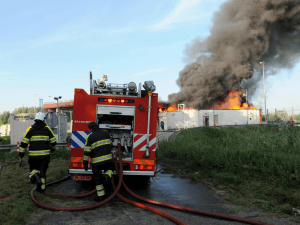Hand Hygiene
advertisement

Volume 2 SMJUSD October 2014 Safety Newsletter Bloodborne Pathogens INSIDE THIS ISSUE: Bloodborne Pathogens 2 Emergency Preparedness 2 Fire Extinguishers 2 Fire Prevention Week 3 Causes of Fire 3 Test your Batteries 3 Backpack Drive! 4 Bloodborne pathogens are infectious microorganisms present in the blood that can cause disease in humans. These pathogens include, but are not limited to, hepatitis B virus (HBV), hepatitis C virus (HCV), and the human immunodeficiency virus (HIV). In a school setting, thegreatest risk of exposure is through direct contact with blood of an infected person. Exposure occurs when an individual’s broken skin or mucous membrane contacts the blood or blood contaminated body fluid of an infected person. In case of an exposure incident, immediately wash the skin area exposed to body fluids with soap and water. If the exposure is to the eye, nose or mouth, flush with water for 15 minutes. Report the incident to your supervisor immediately. Hand Hygiene Good Hand Hygiene is single most effective method of preventing infectious disease. After removing your soiled gloves make sure you wash your hands with soap and water. Handwashing is like a "do-it-yourself" vaccine— it involves five simple and effective steps (Wet, Lather, Scrub, Rinse, Dry). Regular handwashing is one of the best ways to remove germs. Global Handwashing Day is October 15th! Safety New sletter Page 2 HCV, HBV, and HIV HCV HBV HIV 75-85% of infected people develop a chronic (long term) infection 50-100 times more infectious than HIV CDC estimates approx. 50,000 people in the U.S. are newly infected each year Can live on environmental surfaces for 16 hours to 4 days “Soap and water go hand in hand.” Can live on environmental surfaces (e.g., table tops) up to seven days Vaccinations are available 3.2 million people infected in the U.S. – most are unaware Does not survive well outside the body No cure or vaccine – only treatments to slow the virus No cure or vaccine – only treatments to slow the virus Emergency Preparedness Man-made and natural hazards occur routinely in the United States. On average, nearly 70 Federal disaster declarations are issued annually. It is important to identify and learn about the hazards most likely to occur in your community. Make a plan with your family. Here are some key points: Determine the safest course of action and/or escape. Stay informed. Know how your community alerts citizens. Plan for your family’s comfort during disasters. Prepare a kit that can accommodate your family’s needs for up to 72 hours. Don’t forget a kit for the car too. Fire Extinguishers To operate a fire extinguisher, remember the word PASS: - Pull the pin. Hold the extinguisher with the nozzle pointing away from you, and release the locking mechanism. - Aim low. Point the extinguisher at the base of the fire. - Squeeze the lever slowly and evenly. - Sweep the nozzle from side-to-side. Know how to keep in touch. Phone systems may go down. It is sometimes easier to call a family member out of state or to send text messages. For help putting together kits, go to: www.nsc.org/safety_home/ emergency preparedness Page 3 Safety New sletter Fire Prevention Week is Oct. 5- Oct. 11 Home fires In 2011, U.S. fire departments responded to 370,000 home structure fires. These fires caused 13,910 civilian injuries, 2,520 civilian deaths, $6.9 billion in direct damage. On average, seven people died in U.S. home fires per day from 2007 to 2011. Smoking materials Cooking is the leading cause home fires and home fire injuries, followed heating equipment. Smoking is a leading cause of civilian home fire deaths. During 2007-2011 smoking materials caused an estimated 17,900 home structure fires, resulting in 580 deaths, 1,280 injuries and $509 million in direct property damage, per year. Most fatal fires kill one or two people. In 2012, 8 home fires killed five or more people resulting in a total of 44 deaths. Causes of Fire Candles: The top three days for home candle fires are Christmas, New Year's Day and Christmas Eve. Heating The peak months for home heating fires are December, January and February. Smoking Smoking materials (i.e., cigarettes, cigars, pipes, etc.) are the leading cause of fire deaths in the United States Portable generators The most common dangers with portable generators are carbon monoxide (CO) poisoning, electrical shock, and fire hazards. Dryers and washing machines The leading cause of home clothes dryer and washer fires is failure to clean them. Cooking Includes general cooking safety info, as well as tips for microwaves, cooking oil and turkey Test and Replace Batteries Check or replace the batteries in your carbon monoxide and smoke detectors twice a year: when you change your clocks in the Spring and in the Fall. Also, remember to test your detectors monthly! Time change: November 2, 2014 2:00 am Fall back one hour! fryers. For more information on fire safety and Fire Prevention Week, go to www.nfpa.org Page 4 Safety New sletter Backpack Drive! We’re on the Web! www.sanmiguelschools .org We are in the beginning stages of building emergency backpacks for all of our classrooms, libraries, offices and gym! We are in need of new or gently used backpacks to help us launch this program! Please make sure all donations are appropriate and do not have inappropriate graphics or words. You can turn your backpack into the office. We are still in need of 40 backpacks!!





